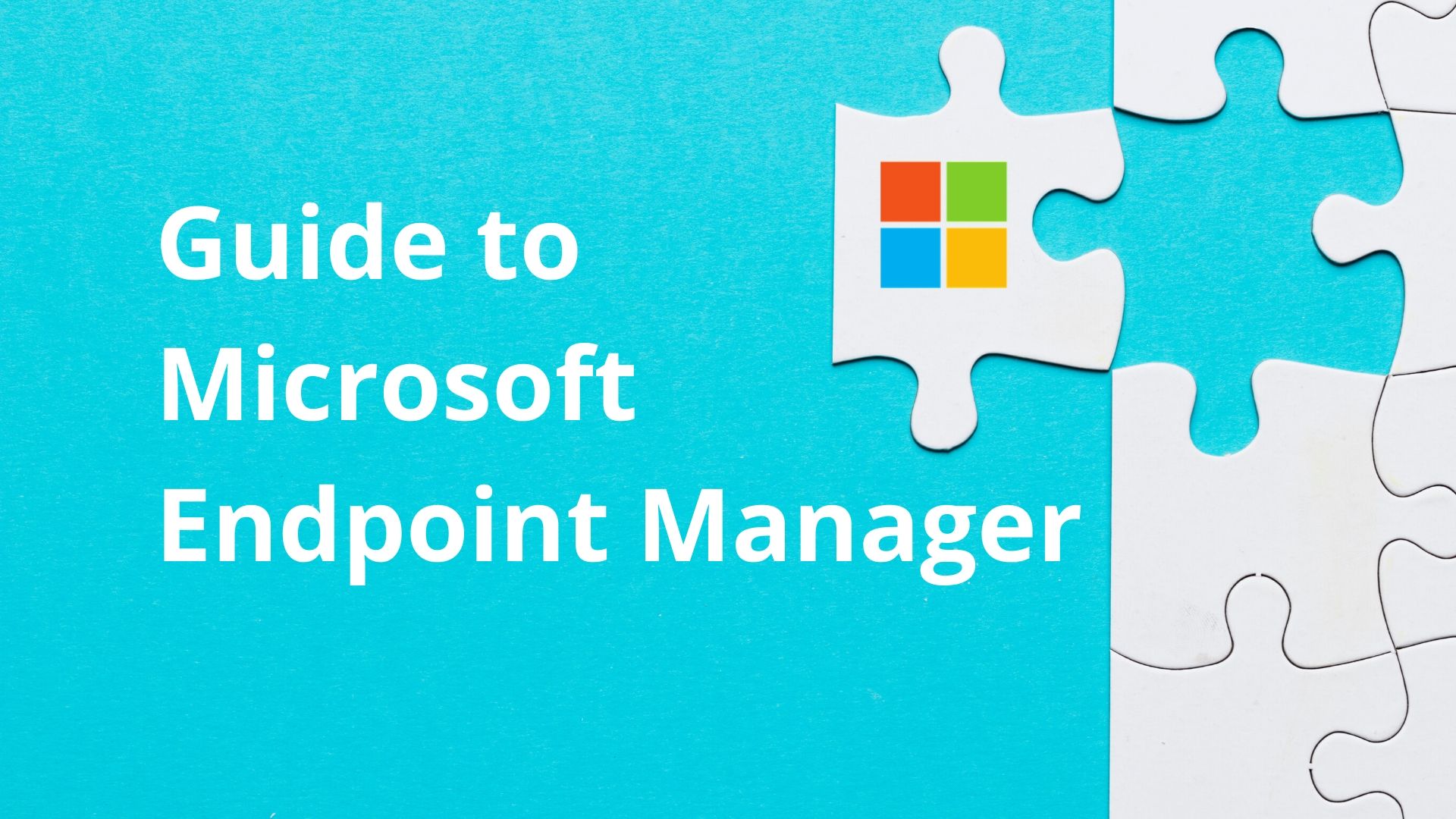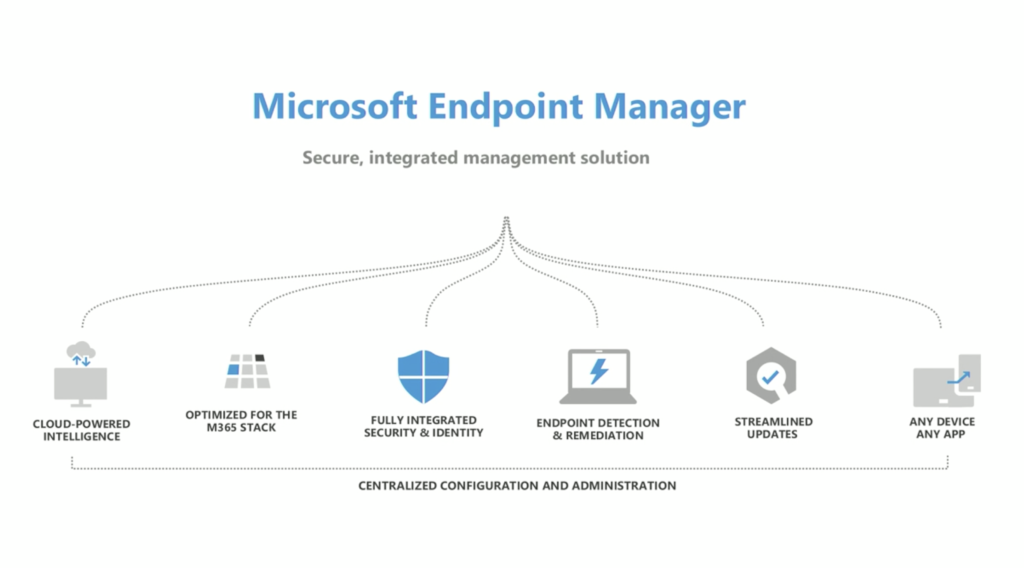

Guide to Microsoft Endpoint Manager
During Microsoft Ignite 2019, users were introduced to a new offering called Microsoft Endpoint Manager which will be a combination of SCCM and Intune. Organizations were using SCCM and Intune separately and missed the benefits of being able to manage their devices together. Because of this lack of combined management other device management vendors were able to scale up their market share slowly.
Considering that SCCM is powerful and has been there for almost 26 years, blending it with a cloud device management solution should be challenging. However, Microsoft has managed to achieve it effectively by the launch of Microsoft Endpoint Manager. In this article, we’ll understand more about the Microsoft Endpoint Manager, its capabilities, integration, features and more.
Microsoft SCCM is a platform for managing network systems, and Intune is another platform that helped users simplify enterprise mobility management with its capabilities to manage roaming devices. SCCM and Intune administrators had one prime challenge, that is to control devices managed by SCCM and Intune in a unified console and that is why Microsoft Endpoint Manager is here.
Firstly, it is a unified console to manage SCCM, Intune, and those co-managed by both platforms. Secondly, it comes with new features and concepts like Autopilot, C0-management and Autopilot. Thirdly, it comes with a new licensing, where the present SCCM users will be able to user Intune to manage Windows 10 devices.
And finally, the modern management options that Brad Anderson mentioned in his blog post, that explains about employing MDM APIs replacing the Group policy, in-depth analytics with the assistance from artificial intelligence and machine learning, improving the overall user experience and security.Below is the image that illustrates the capabilities of Endpoint Manager in short.

The sneak peak to Microsoft Endpoint Manager Admin Centre (MEMAC) began when Microsoft brought in the co-management features, that would allow users to manage their targeted devices using both SCCM and Intune. In order to achieve this integration between SCCM and Intune, Microsoft’s developers made the SCCM and Intune communicate with each other, so one can platform can proceed with what the other platform has left behind. According to Microsoft, the MEMAC can manage SCCM servers that is currently on premises.
Integrating SCCM and Intune can happen in three ways,
The presenters also mentioned initially the MEMAC will be supporting the helpdesk roles and in a year they will start supporting other roles. The main objective behind Microsoft Endpoint Manager is a unified approach towards inventory as the administrators will be able to see devices that are being managed by SCCM, Intune, and Co-managed devices together in a single console.
Microsoft will include several new features like, desktop analytics, device details, timeline of events, remote wipe, GPS track, on-demand app installation and more in a unified console. And adding to those features, policy analytics and user experience analytics will aid in recommending the best MDM policies for the GPO configured ones.
Users can also fix the boot time using startup configuration settings to avoid heavy apps during the user device boot.
When Brad Anderson first wrote about co-management, he did mention that it is more of a bridge and that is how it was represented back at Ignite 2017. But now it has become more of a destination than just a bridge, with better flexibility for the administrators. With a unified console for managing the inventories administrators will have increased efficiency by reducing their switching between multiple consoles.
Even the Configuration Manager’s compliance policies can be applied to the Intune system using a simplified validation and reporting methodology as shown in the image below.
In our last article we did see about System Centre 2012 R2 Configuration Manager, it’s upgrades, design, features and system requirements. You could be still with SCCM 2012 R2 or the latest version of the Configuration Manager, in either case it is best if you could move to the Microsoft Endpoint Manager console, by either client or tenant attach as soon as possible to make best use of the Intune license for Windows 10 devices.
Compared to the earlier licensing which was quite confusing, this latest licensing model for Mircosoft Endpoint Manager is comparatively simple and transparent. Remember the Intune licenses can be used to manage Windows 10 devices only.
Finally three main reasons you should experience Microsoft Endpoint Manager is,
Also, for those who question SCCM is already going down, below is an image from Ignite 2019 that answers it.
Recast Software offers a suite of tools designed to enhance and simplify endpoint management in…
Patch My PC is a widely-used solution that simplifies third-party application management by automating app…
Explore the top 5 best Microsoft Intune alternatives, comparing key features, user reviews, and capabilities…
Discover the top 7 smartphones of 2024 with best security features, offering privacy, performance, and…
Discover the top 11 log management tools for efficient system management and monitoring. Learn about…
Explore the top 5 threat intelligence tools, their features, and how they enhance cybersecurity against…
View Comments
Wonderful resourceful information. I actually like what I have
acquired here. You make your site articles pleasurable and easy to grasp.
a
I can't wait to learn more from you. Bookmarked!